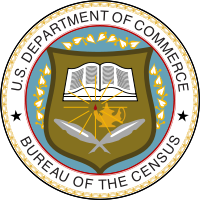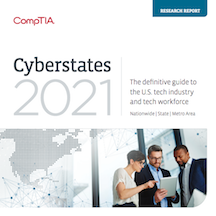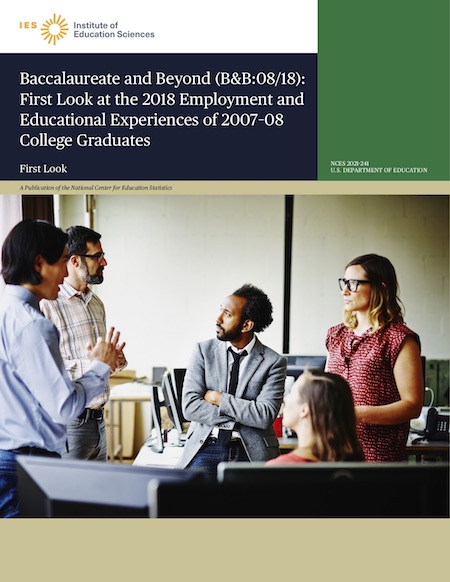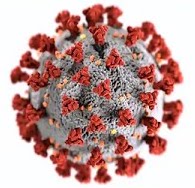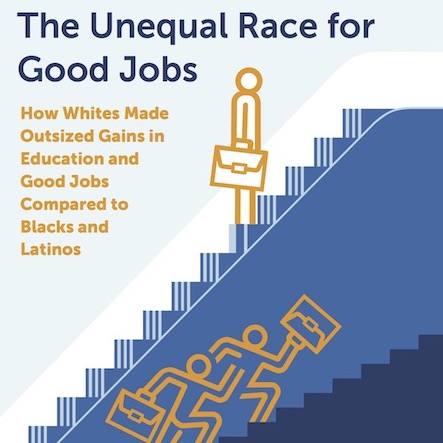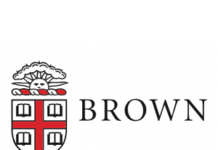Study Finds Persisting Racial Inequality in Access to Financial Services and Credit
The Brookings Institution study finds that there are stark contrasts in access to credit for African Americans: Interest rates on business loans, bank branch density, local banking concentration in the residential mortgage market, and the growth of local businesses are markedly different in majority Black neighborhoods.
African Americans Are Making Slow Progress in Closing the Racial Gap in Investments
Researchers examined investment account ownership across more than 80,000 households of differing racial and ethnic backgrounds over a six-year period. They found only about a quarter of African American adults owned a taxable investment account, and more than half owned no investments of any kind.
Census Report Examines Racial Gap in Episodic and Chronic Poverty Rates
Chronic poverty is defined as being below the poverty income threshold for the entire four years that were surveyed. Some 5.6 percent of the U.S. Black population was poor for the entire four-year period. This was true for only 1.7 percent of the non-Hispanic White population.
The Huge Racial Disparity in Passage Rates on the Architect Registration Examination
For the first time, the National Council of Architectural Registration Boards has released demographic data on passage rates for its Architect Registration Examination, which is required for licensure throughout the United States. The passage rate for Blacks was significantly lower than the rate for Whites on the six sections of the examination.
Black Urban Areas Are Much Hotter Than White City Neighborhoods in the Summer
In 71 percent of the counties studied, land surface temperatures in communities with higher rates of poverty were up to 4 degrees Celsius, or 7 degrees Fahrenheit warmer, compared to the richest neighborhoods during the summer months.
Study Finds Black Access to Healthcare Lags in States That Show a High Level...
The results showed that the higher the level of racism in a given state, the less access Black people in that state had to health care. The higher the level of racism in a given state, the more access White people had to health care. In addition, the worse the state’s racism score, the higher the quality of care White people reported receiving.
Report Documents the Employment Shortfall of African Americans in the Tech Workforce
A new report from the Computing Technology Industry Association offers a wealth of data on employment in the technology sector. In the San Jose, California, metropolitan area, home to Silicon Valley, there are just over 3,000 African Americans employed in tech positions. In contrast, there are 45,000 White workers and more than 107,000 Asian American workers.
The Far-Reaching Racial Disparities as a Result of the COVID-19 Pandemic
While overall deaths relating to motor vehicle crashes increased by 7.2 percent in 2020, African American deaths increased by 23 percent. The fact that Blacks were less likely to be able to work at home during the pandemic was a contributing factor.
Black Faculty Are Vastly Underrepresented at Southern Colleges and Universities
The Southern Regional Education Board has released new data that shows only 9.2 percent of full- and part-time faculty members are Black at public four-year institutions in the 16-state region. Nearly 18 percent of all undergraduate students at these educational institutions are African Americans.
Pew Research Center Report Documents Racial Gap in STEM Degree Attainment and Employment
Black students earned 7 percent of STEM bachelor’s degrees as of 2018, the most recent year data is available. This is below their share of all bachelor’s degrees (10 percent) or their share of the adult population (12 percent). Black adults are also underrepresented among those earning advanced degrees in STEM.
COVID Almost Eliminated the Black-White Unemployment Rate Gap, But Now It’s Back
For many decades the Black unemployment rate has traditionally been double the rate for Whites. This racial gap existed in both good economic times and bad with only slight fluctuations in the ratio. After the pandemic hit, the Black rate was only 1.2 times the rate for Whites. Since then the racial gap has reappeared.
The Racial Gap in College Enrollments of Recent High School Graduates
For non-Hispanic White high school graduates in 2019, 47.9 percent had enrolled in four-year colleges and universities by October of that year. For 2019 Black high school graduates, less than 32 percent had enrolled in four-year colleges and universities by the ensuing fall.
Scientists Call for an End to Racial Funding Disparities in Biomedical Engineering
Representatives from a network of women deans, chairs, and distinguished faculty in biomedical engineering are calling upon the National Institutes of Health and other funding agencies to address disparities in allocating support to Black researchers.
Racial Differences in Well-Being for College Graduates Ten Years After Earning Their Degrees
Thirty percent of Blacks who earned a bachelor's degree in the 2007-08 academic year had earned a master's degree 10 years later. Only 26.6 percent of Whites had earned a master's degree. Whites were significantly more likely than Blacks to earn a professional degree within 10 years of graduating from college.
The Huge Racial Gap in Graduate School Student Debt
African Americans who earned doctorates in 2019 had an average graduate student debt of $84,050. Nearly 21 percent of African Americans who earned doctorates in 2019, had graduate student debt of more than $160,000.
Academic Disciplines Where African Americans Received Few or No Doctorates in 2019
In 2019 there were 2,512 African Americans who earned doctorates. They made up 7.1 percent of all doctorates awarded to U.S. citizens or permanent residents in the U.S. But there are many fields where Blacks earned only a tiny percentage of all doctorates. For example, African Americans earned only one percent of physics doctorates.
For 50 Years, There Has Been No Progress in Closing The Black-White Median Income...
In 2019, the median Black household income was 59.7 percent of the median income of non-Hispanic White families. With only minor fluctuations, the racial gap in median income has remained virtually unchanged for more than a half-century.
The Stubborn Racial Gap in Scores on the SAT College Entrance Examination
Some 54 percent of all Black students in the high school Class of 2020 who took the SAT College Entrance Examination did not meet the minimum benchmark in either reading or mathematics. For Whites, the figure was 19 percent.
The Nation Is Making No Progress in Closing the Racial Gap in Standardized Test...
The most striking statistic is that only 4 percent of all Black test takers were rated ready for college-level courses in all four areas of English, mathematics, science, and reading. Whites were more than six times as likely as Blacks to be prepared for college-level work in all four areas.
How the Racial Digital Divide Impacts Online Education During the Pandemic
A new Census survey finds that only 61.6 percent of Black households with children in K-12 education said they had the technology to allow children to do their online schoolwork at all times. For White households, nearly 73 percent had total access to the online education offered for their children.
Data Shows Huge Racial Disparities in Impact of COVID-19 Virus
According to the Centers for Disease Control and Prevention, Blacks make up 13 percent of the U.S. population but over 33 percent of the patients admitted to hospitals with the COVID-19 virus. In some cities Blacks are dying from the virus at rates double their percentage of the population.
Racial Differences in the Gender Wage Gap
A new report from the Center for America Progress finds that White women earn 79 percent of what is earned by White men. But African American women earn only 62 cents to the dollar compared to the earnings of White men.
Racial Discrimination Directed Against Children Can Impact Their Mothers’ Health
The study found that when biological and environmental factors affecting women's health are accounted for, there tends to be a decline in a middle-aged woman's health corresponding to the level of discrimination experienced by their children.
George Washington University Study Finds a Major Racial Gap in Financial Literacy
The results of the survey found that African-American adults answered 38 percent of the questions correctly, compared to 55 percent of White adults. Only 28 percent of African American adults answered over one-half of the questions correctly. For White adults, the figure was 62 percent.
The Racial Poverty Gap and Its Impact on Higher Education
In 2018, nearly 30 percent of all African Americans below the age of 18 were living in poverty. For non-Hispanic White children, the rate was 8.9 percent. Many Black children from impoverished backgrounds do not even consider higher education due to the perceived cost.
Georgetown University Study Finds the Deck Is Stacked Against Black Workers
New research from the Georgetown University Center on Education and the Workforce finds that White workers have benefited from historical and systemic educational and economic advantages to build a disproportionate edge in the educational pipeline and the workforce that will continue to last for decades.
New Report Offers Statistics on Pell Grant Recipients by Racial and Ethnic Group
More than 57 percent of African American undergraduate students received a federal Pell grant in the 2015-16 academic year. For White undergraduates, 31.5 percent of all undergraduates received a federal Pell grant. Blacks received 22.7 percent of all Pell Grants in the 2015-16 academic year.
The Racial Gap in Participation in High School AP, IB, and Dual Enrollment Programs
According to a new report released by the U.S. Department of Education, White high school students are far more likely than their Black peers to take Advanced Placement (AP) classes, international baccalaureate (IB) courses or participate in dual enrollment courses with colleges.
The Snail-Like Progress of Black Scholars on College and University Faculties
In 1997, Blacks made up 5 percent of all college and university faculty, compared to 6 percent 20 years later in 2017. At this rate of progress, the percentage of Blacks on the faculties of American colleges and universities would not reach parity with the percentage of Black enrollments for 160 years.
Racial Differences in College Persistence and Retention Rates
A new report from the National Student Clearinghouse Research Center finds that college student persistence and retention rates are on the rise. But there remains significant differences in these rates between Blacks and Whites.
New Report Finds Residential Segregation Remains Rampant in the United States
The Center for American Progress reports that significant disparities still exist between African Americans and non-Hispanic Whites in terms of access to homeownership. This, in turn, hinders the ability of African American families to send their children to quality public schools.
The Economic and Educational Status of African Americans a Year After Earning a Bachelor’s...
The median income of recent African American college graduates was $36,000. For Whites, the median income was $40,000. This income gap for recent college graduates is far narrower than the overall Black-White income gap. This shows the value of higher education in reducing income equality.
Nationwide Study Finds Major Racial Gap in School Suspensions and Expulsions
The study offers a comprehensive look at racial disparities in school discipline involving expulsion or suspension from school at secondary educational institutions throughout the United States. The study examined disciplinary records involving nearly 16,000 middle schools and more than 18,000 high schools all across the country.
Harvard University Making Strides In Faculty Diversity
Since 2004, tenured-track appointments at Harvard University are up 54 percent for underrepresented minorities, which is particularly striking since the overall number of tenure-track faculty has decreased by 18 percent over the same time period.
Study Finds Severe Racial Gap Between Who Causes Air Pollution and Who Breathes It
The researchers found that air pollution is disproportionately caused by the consumption of goods and services by White Americans, but disproportionately inhaled by Black and Hispanic Americans.
Texas Tech Medical School Will No Longer Use Race as a Factor in Admissions...
This is the first agreement reached between the Trump administration and a college to forgo using race as a factor in the admissions process.






